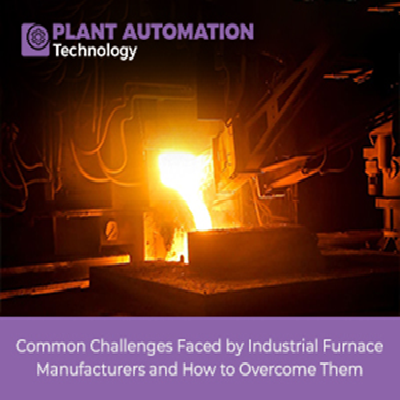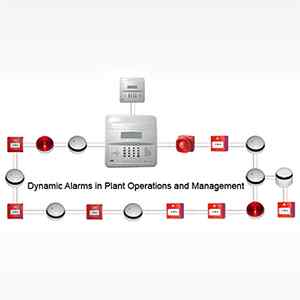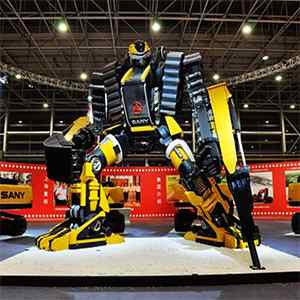Common Challenges Faced by Industrial Furnace Manufacturers and How to Overcome Them

Introduction
Industrial furnace manufacturers play a crucial role in various industries by providing equipment for high-temperature processes such as melting, heat treatment, and chemical reactions. These robust and specialized furnaces enable the production of a wide range of products, from metals and alloys to glass and ceramics. However, the path to success for industrial furnace manufacturers is not without its challenges. From navigating market fluctuations and rapid technological advancements to ensuring compliance with stringent regulations and facing a shortage of skilled workforce, manufacturers in this industry must be resilient and proactive in overcoming obstacles.
In this article, we will delve into the common challenges faced by industrial furnace manufacturers and provide valuable insights on how to overcome them. By addressing these challenges head-on and implementing effective strategies, manufacturers can enhance their competitiveness, streamline their operations, and ultimately thrive in the dynamic marketplace.
Challenges Faced by Industrial Furnace Manufacturers
1. Fluctuating Market Demand
One of the significant challenges for industrial furnace manufacturers is the fluctuating market demand. Market conditions, economic fluctuations, and industry-specific factors can cause demand for industrial furnaces to vary significantly over time. To overcome this challenge, manufacturers must adopt strategies such as diversifying their product offerings, targeting multiple industries, and maintaining a strong customer relationship management system.
Manufacturers can mitigate their dependence on a single market segment and cater to various industries by diversifying their product offerings. This strategy enables them to tap into multiple revenue streams and minimize the risks associated with market fluctuations. For instance, a manufacturer predominantly serving the steel industry can expand its range of products to include furnaces designed for aerospace, automotive, or pharmaceutical applications.
Additionally, building strong customer relationships and maintaining open lines of communication is crucial. By understanding customer needs and requirements, manufacturers can tailor their products and services accordingly. This customer-centric approach helps build loyalty and increases the likelihood of repeat business, even during periods of a market downturn.
2. Rapid Technological Advancements
In the ever-evolving industrial furnace manufacturing industry, staying abreast of technological advancements can pose challenges for manufacturers, particularly smaller businesses constrained by limited resources. Nevertheless, embracing emerging technologies can bestow a competitive edge and unlock novel opportunities.
| Also Read: How are Industrial Furnaces and Ovens Revolutionizing Manufacturing Processes? |
To maintain a competitive edge, manufacturers should prioritize investment in research and development (R&D). By allocating resources to R&D, manufacturers can delve into pioneering solutions, enhance product performance, and bolster energy efficiency. Additionally, collaborating with technology providers, universities, or research institutions can expedite technological advancements and facilitate the exchange of knowledge.
Automation and advanced control systems are among the emerging technologies transforming the industrial furnace manufacturing landscape. These technologies offer benefits such as increased precision, improved productivity, and reduced energy consumption. By implementing automation, manufacturers can streamline processes, minimize human error, and optimize overall efficiency.
Moreover, energy-efficient designs have become a significant consideration for manufacturers and customers alike. Energy costs and environmental concerns have driven the demand for furnaces that consume less energy and produce fewer emissions. By investing in energy-efficient designs, manufacturers can meet regulatory requirements, appeal to environmentally conscious customers, and reduce operational costs.
3. Compliance with Regulations and Standards
Manufacturers in the industrial furnace industry must comply with various regulations and standards to ensure the safety of their products and operations. Meeting these requirements can be complex and time-consuming, particularly for manufacturers working in multiple jurisdictions.
To overcome this challenge, manufacturers should establish a dedicated regulatory compliance team responsible for monitoring and interpreting regulations applicable to their products. This team can ensure that the manufacturing processes, materials, and safety features align with the required standards.
Staying updated on relevant regulations is crucial, as compliance requirements can change over time. Manufacturers should actively participate in industry associations, attend conferences, and engage with regulatory bodies to stay informed about upcoming changes. Implementing a robust quality control process is equally important to ensure that products consistently meet the required standards.
In addition, manufacturers should also give careful consideration to obtaining relevant certifications, such as ISO 9001 (Quality Management System) and ISO 45001 (Occupational Health and Safety Management System). These certifications serve as tangible evidence of complying with international standards, while simultaneously bolstering the company's reputation and enhancing its credibility.
4. Skilled Workforce Shortage
Finding and retaining a skilled workforce is a persistent challenge for many industrial furnace manufacturers. The specialized nature of the industry requires technicians and engineers with expertise in furnace design, operation, and maintenance. Addressing the skilled workforce shortage is vital for maintaining high-quality manufacturing processes and providing excellent customer service.
Manufacturers can tackle this challenge by investing in training programs and apprenticeships. By partnering with educational institutions, manufacturers can develop customized training programs that equip individuals with the necessary skills for the industry. These programs can include hands-on training, theoretical knowledge, and exposure to real-world industrial furnace operations.
Additionally, creating a culture of continuous learning and career development within the organization is essential for attracting and retaining talent. Manufacturers can offer opportunities for employees to enhance their skills, attend seminars or workshops, and pursue advanced certifications. This not only increases employee satisfaction but also ensures a pool of highly skilled individuals within the organization.
5. Global Competition
Industrial furnace manufacturing is a global industry, and manufacturers face intense competition from both domestic and international players. To stay competitive, manufacturers must focus on product differentiation, innovation, and cost optimization.
Implementing lean manufacturing principles can help manufacturers streamline production processes and reduce waste. By identifying and eliminating non-value-added activities, manufacturers can optimize resource allocation, shorten lead times, and enhance overall efficiency. This, in turn, allows them to offer competitive pricing while maintaining profitability.
Innovation is another key factor for gaining a competitive edge. Manufacturers should encourage a culture of innovation within their organizations, fostering creativity and idea generation. By continuously improving product design, incorporating new technologies, and addressing customer pain points, manufacturers can differentiate their offerings in the market.
Furthermore, developing strong relationships with suppliers and exploring new markets can expand a manufacturer's customer base and offset competitive pressures. Collaborating with reliable suppliers can ensure a steady supply of high-quality materials and components. Exploring emerging markets or untapped industries can also provide opportunities for growth and reduce dependence on a limited customer base.
Conclusion
Industrial furnace manufacturers face several challenges in today's dynamic business environment. By addressing issues such as fluctuating market demand, rapid technological advancements, compliance with regulations, skilled workforce shortage, and global competition, manufacturers can overcome these hurdles and thrive in the industry. By embracing innovation, investing in talent development, and staying customer-centric, manufacturers can position themselves for long-term success.







